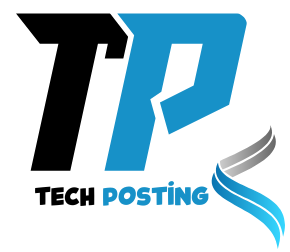Mobile Device Management (MDM) keeps work data safe while making it easy to set up, secure, and support phones, tablets, and laptops used at work, whether they’re company-owned or BYOD.
At the same time, the business phone plan chosen can speed up onboarding, reduce roaming costs, improve uptime, and integrate cleanly with MDM workflows—especially with eSIM and modern provisioning tools. Bringing these two pieces together turns mobility from a tangle of manual tasks into a smooth, secure, and measurable process.
What MDM actually does
At its core, MDM enrolls devices, enforces security policies, manages apps, monitors compliance, and can lock or wipe lost devices—centrally and at scale.
Typical capabilities include device inventory, remote configuration, app distribution, policy enforcement (passcodes, encryption), real-time alerts, and selective wipe for BYOD, all aimed at protecting corporate data without blocking productivity.
Leading platforms also integrate with identity tools to gate access and automate setup, so the right users get the right apps and settings with minimal hands-on effort.
Why business phone plans matter to MDM
A phone plan is more than minutes and data—it affects how quickly devices get activated, how well they work where teams are, and how much overhead IT carries day to day. The best-fit plans amplify MDM benefits by enabling:
- Faster activation and zero-touch rollout with eSIM, avoiding physical SIM shipping and enabling remote number assignment through standard, secure remote provisioning methods.
- Clean separation of personal and work lines on one device via multiple profiles, which complements MDM containers for BYOD without adding hardware.
- Smarter roaming with local or regional profiles added on demand, cutting costs while staying compliant and connected abroad.
- Consistent coverage and uptime, which keeps MDM policies, updates, and app pushes working reliably in the field.
eSIM: the bridge between plans and management
eSIM is a GSMA standard that allows operator profiles to be downloaded and managed over the air, replacing plastic SIM swaps with software flows that are secure and scalable. GSMA’s eSIM Discovery streamlines first activation by matching an eSIM’s unique eID with the correct operator profile for universal, remote provisioning—a major boost for distributed teams and device fleets.
For enterprises and IoT, modern platforms manage the full subscription lifecycle and enable bulk operations, reducing lock-in and simplifying profile switching when coverage or rates change. When paired with MDM, IT can provision connectivity and policies in parallel, cutting lead times and eliminating many manual steps.
How MDM and plans work together day to day
- Zero-touch onboarding: A device can be enrolled into MDM and activated on the chosen plan in minutes—MDM pushes work profiles and apps while eSIM provisioning assigns numbers and data plans over the air.
- Policy plus plan controls: MDM enforces encryption, passcodes, and app rules, while the plan provides network features like hotspot, data priority, or international add-ons that match role needs.
- Rapid responses: Lost device? MDM locks or wipes the corporate data, and the carrier profile can be deactivated or replaced remotely to limit exposure and downtime.
- Cost and compliance insight: MDM provides device posture and app compliance; telecom portals and services add usage and roaming visibility; together, teams can right-size plans and maintain a secure baseline.
Key MDM features to expect
- Enrollment and configuration: Automated setup with baseline policies, certificates, Wi-Fi/VPN, and email profiles, including support for platform-native frameworks like iOS and Android Enterprise.
- App management: Private app catalogs, managed distribution, updates, and removal, ensuring only approved tools are present and current.
- Security controls: Passcode and biometric requirements, encryption, jailbreak/root detection, and conditional access tied to compliance status.
- Monitoring and response: Real-time alerts on risky behavior or drift from policy, with the ability to lock or wipe devices and perform remote troubleshooting.
- BYOD containment: Work profiles or containers to separate corporate data and enable selective wipe without touching personal content.
What to look for in a business phone plan that “plays nice” with MDM
- Strong eSIM support: Universal QR activation, bulk profile delivery, and enterprise-friendly workflows for remote provisioning and fast swaps when roles or coverage change.
- Coverage that matches work: Reliable service in offices, job sites, and travel corridors, supporting MDM updates, app pushes, and secure tunnels without lag.
- Manageable roaming: Regional passes and the option to load local eSIM profiles, keeping costs predictable for frequent travelers and field teams.
- Enterprise integrations and care: Business-grade support, APIs or portals for number assignments, and SLAs that keep onboarding and issue resolution moving.
- Flexible terms and features: Mix-and-match data tiers, hotspot allowances, and add-ons aligned to role-based profiles defined in MDM, avoiding overpaying for “one-size” plans.
Implementation path that reduces friction
- Assess devices and roles: Map platform mix, critical apps, security requirements, and travel patterns; ensure device OS and models support required MDM features and eSIM needs.
- Pilot MDM plus eSIM: Trial a small cohort across problem sites to validate coverage, activation flows, app delivery, and compliance checks before scaling.
- Integrate identity and service desks: Connect MDM with IAM and ITSM to automate joins/moves/leaves and keep tickets and ownership data aligned with telecom records.
- Define governance: Set minimum OS versions, update windows, selective wipe rules, and who can request profile changes, then document and enforce in MDM and with the carrier.
- Measure outcomes: Track activation lead time, help desk tickets, roaming spend, and device compliance rates to show the impact of the combined approach.
Security and compliance benefits
Combining MDM’s device and data controls with robust carrier provisioning raises the bar on endpoint security, lowers the risk from lost or cloned SIMs, and speeds incident response.
GSMA’s eSIM processes rely on accredited infrastructure and secure, standards-based authentication, which strengthens the integrity of activation and profile management compared with ad-hoc physical swaps.
With visibility from both MDM and the carrier side, organizations can prove policy enforcement, support audits, and consistently remove access when people or devices change state.
Common pitfalls—and how to avoid them
- Partial eSIM support: Not all plans or portals offer full enterprise workflows; verify activation at scale and multi-profile behavior before committing.
- Overreliance on public Wi-Fi: Weak coverage pushes users to insecure networks; prioritize plans and devices that keep cellular reliable for managed traffic.
- BYOD overreach: Avoid full-device control on personal phones; use containers and limit monitoring to the work side to sustain adoption and trust.
- Fragmented ownership data: Keep MDM and telecom records synchronized to avoid orphaned lines and compliance gaps during moves and offboarding.
- Skipping identity integration: Without IAM, policy-based access is brittle; connect MDM with identity to ensure only compliant, known devices reach sensitive apps.
Final Words
MDM provides the controls, automation, and visibility that modern mobile fleets require, while the right business phone plan—especially with eSIM and strong enterprise support—makes those controls easier to deploy, cheaper to run, and faster to adapt when people, places, or risks change.
Treat connectivity as part of the management stack: test eSIM workflows, align plan features to role-based MDM profiles, integrate identity, and measure activation time, roaming costs, and compliance rates to prove value over time. When the plan and the platform work in sync, teams get day-one access, security stays tight, and mobility becomes simpler to run at any scale.

